Nextcloud - iOS
Initial Config
For the best experience, it is recommended to set up your Nextcloud devices on LAN with a designated IP address and port. This setup allows you to sync files, calendars, and contacts while away from home using a Router VPN.
Once configured, you can also use Tor for remote syncing. However, keep in mind that transferring large files may fail or take a considerable amount of time. Therefore, it is advisable to use remote syncing primarily for low-bandwidth activities, such as syncing calendars, contacts, tasks, and notes. Streaming music is also possible.
When using remote connections, be mindful of any data caps on your cellular plan. You may need to limit bandwidth usage by disconnecting from your Router VPN server or Tor when using cellular data.
Standalone Client
The latest version of the official Nextcloud client is available on their download page.
LAN/ Setup
Make sure you have first set up LAN access.
-
Download the iOS Nextcloud client from App Store.
-
Open the client and tap "Log In".
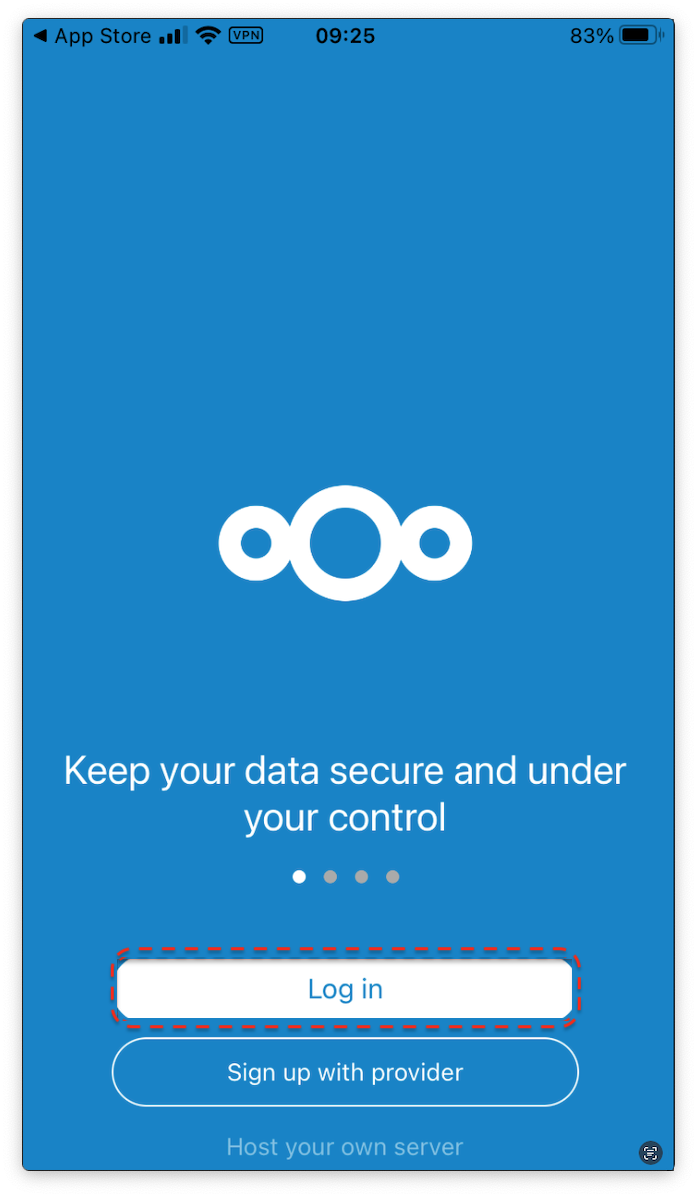
-
From your server's Nextcloud Service page, go to "Interfaces" and copy the IP address and port, or .local and port.

-
Enter your LAN address under "Server Address" and tap "Next".
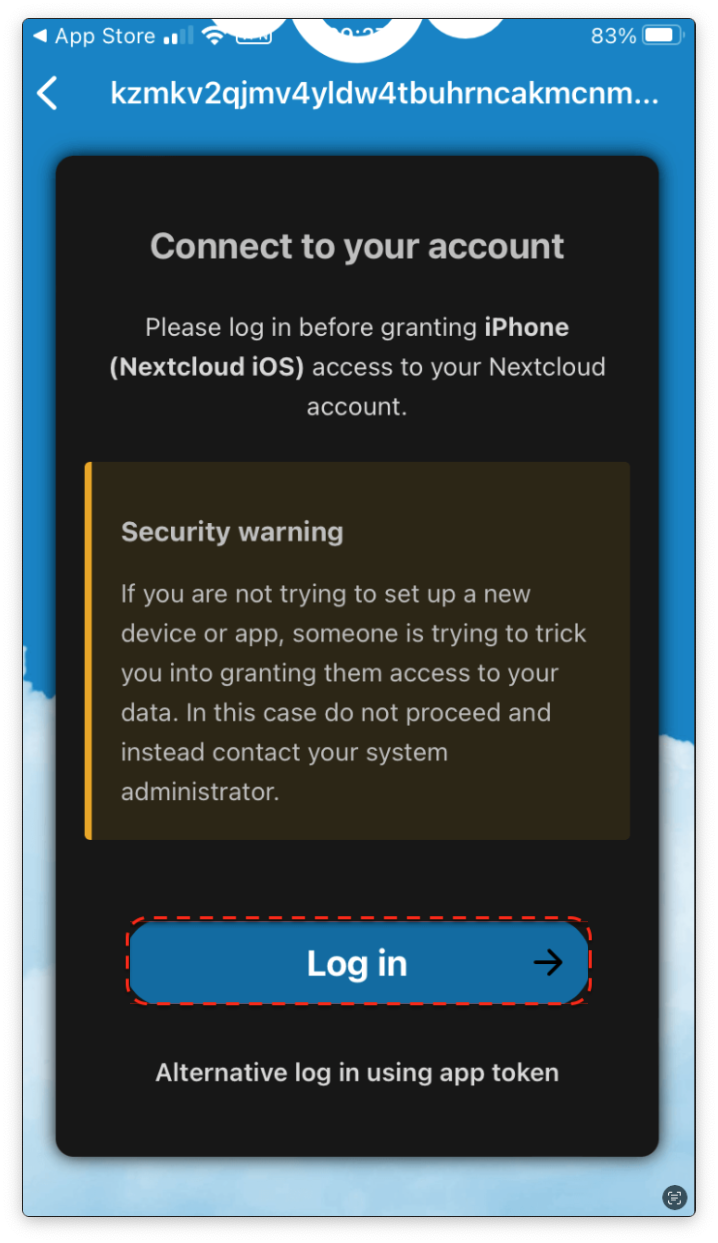
-
You will be shown the "Connect to your account" screen, and then click "Log In" and "Grant Access".
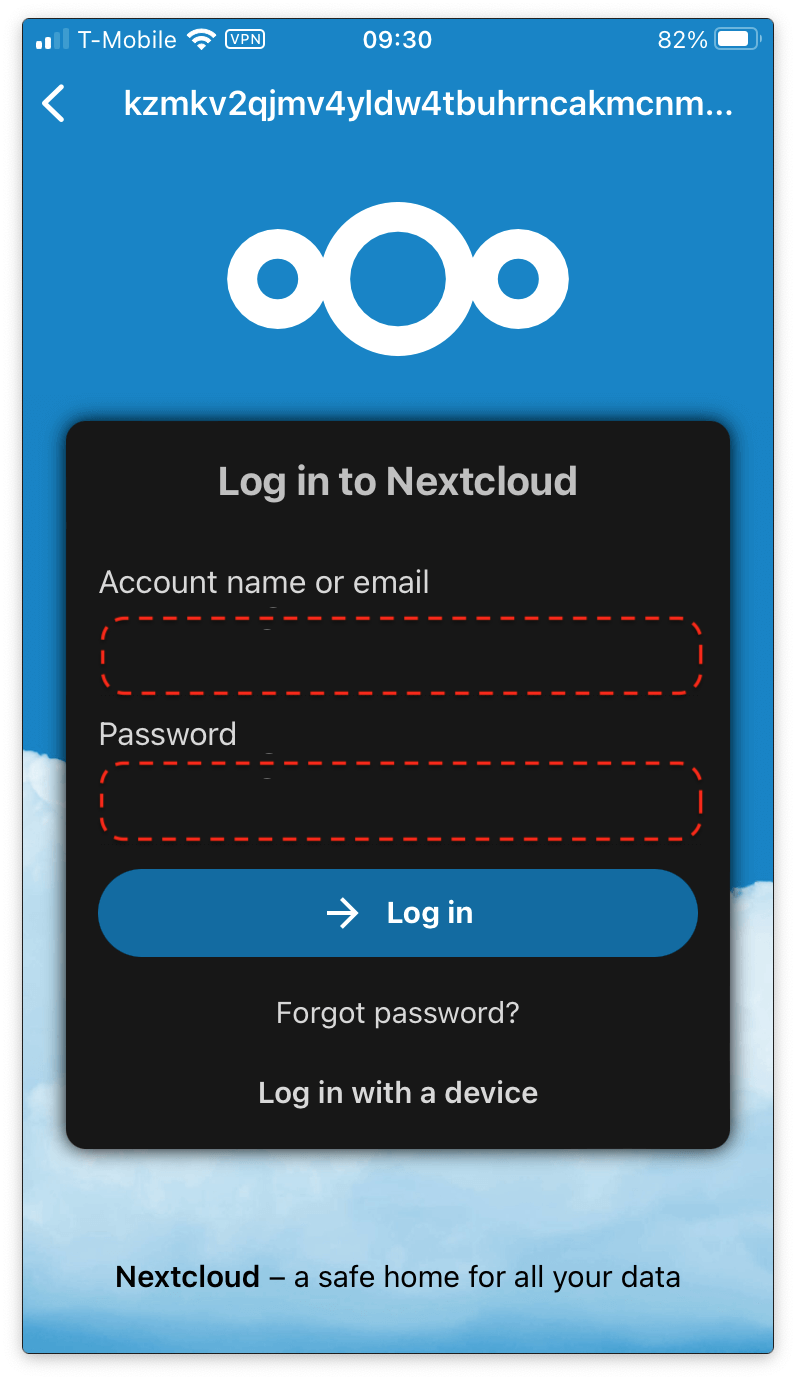

-
Next, you will be asked to enter the username and password, which can be found on the startOS Nextcloud Service page under the "Properties" tab.

-
The account access page will be displayed, tap "Grant access".
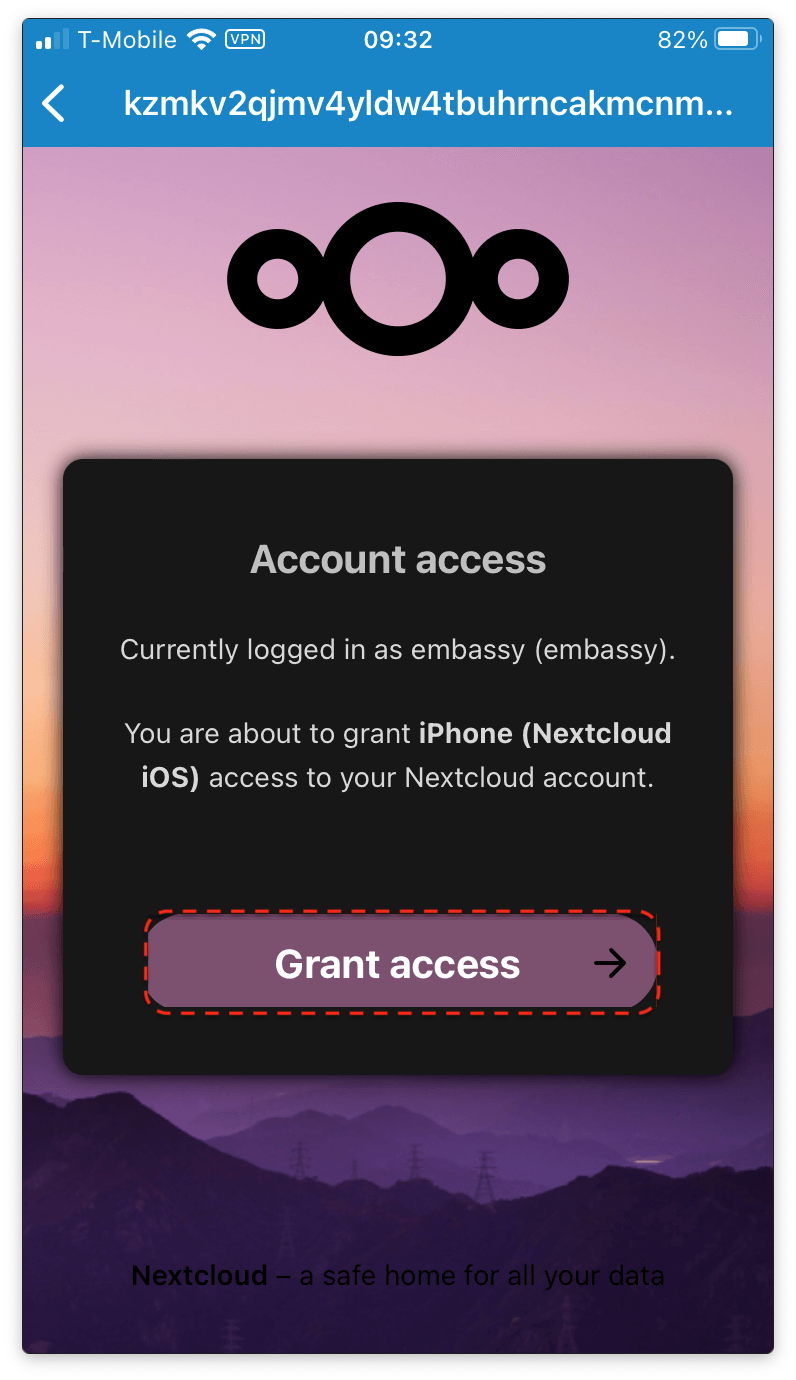
-
Files will begin syncing immediately, and you will see your username and account icon in the top left corner.
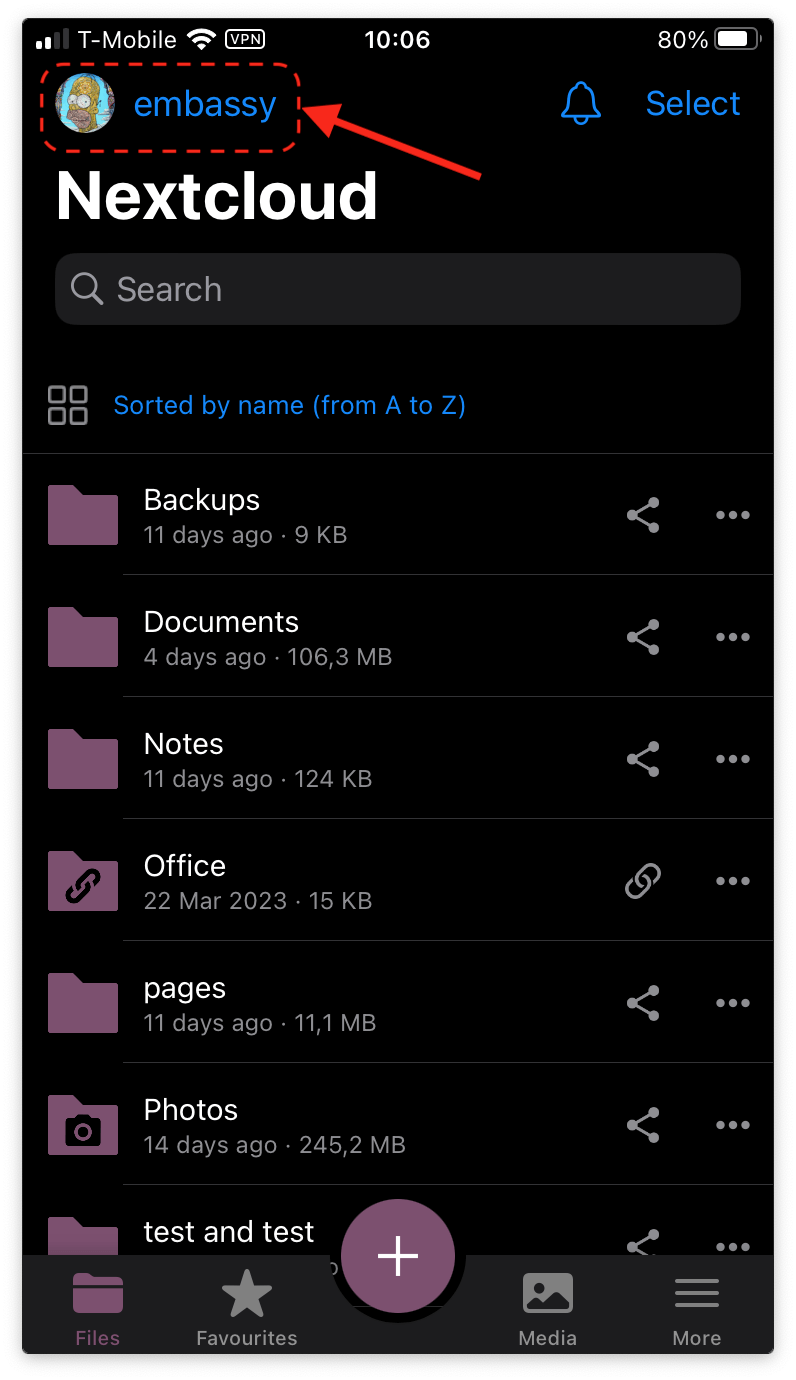
-
That's it! From this mobile client you can receive notifications, control accounts and syncing, and quickly access your apps' WebUI pages.
Tor Setup
You will first need to have the Tor daemon running.
- Click the account in the top left again, then "Add Account."
- On the following screen, click "Log in," then enter your Nextcloud Tor server address, which you can copy from Nextcloud -> Interfaces - Tor. This should start with
https://and end with.onion. Click Next. - This will launch your browser and prompt you to log in to your account. Log in and then grant access as we did for LAN.
- That's it! You may wish to set up some select folders for remote sync, but for large files, it is best to sync on LAN only, so you can "Skip folders configuration" on the resulting screen if you wish. Check your connection by clicking the newly created account in the client app.
Device Integration
In order to sync calendars and contacts with your iOS device, follow the steps below, which are adapted from the Official Nextcloud guide.
First head into the top-righthand menu of your Nextcloud's WebUI and click "Apps," then search for and install the Calendar and/or Contacts Apps. Next folow guide for iOS.
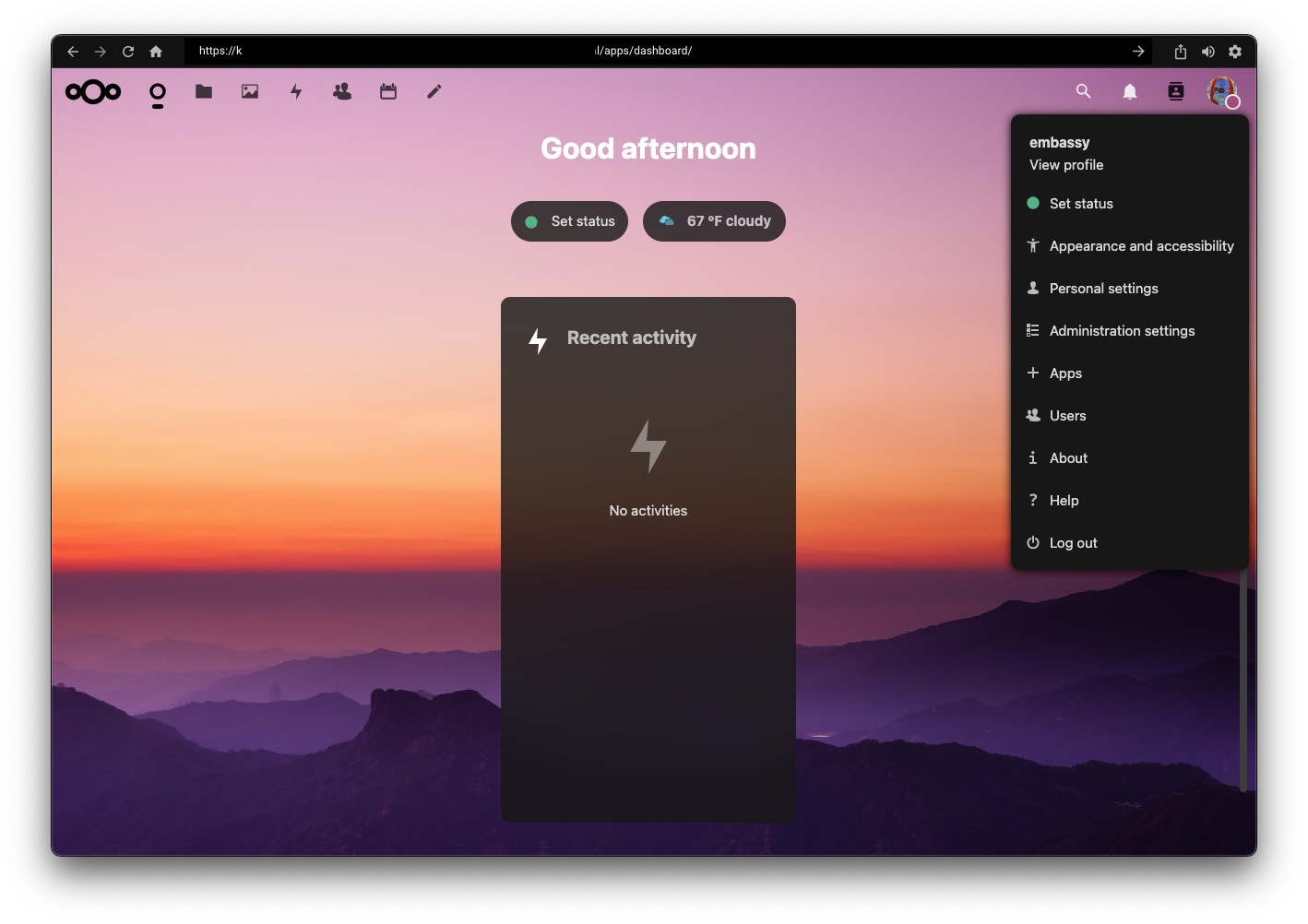
-
Open the "Settings" app on iOS device.
-
Select "Calendar" (or "Contacts") -> "Accounts" -> "Add Account" -> "Other" -> "either CalDAV (for Calendar setup) or CardDAV (for Contacts setup)". Return to this step after completing one in order to add the other.
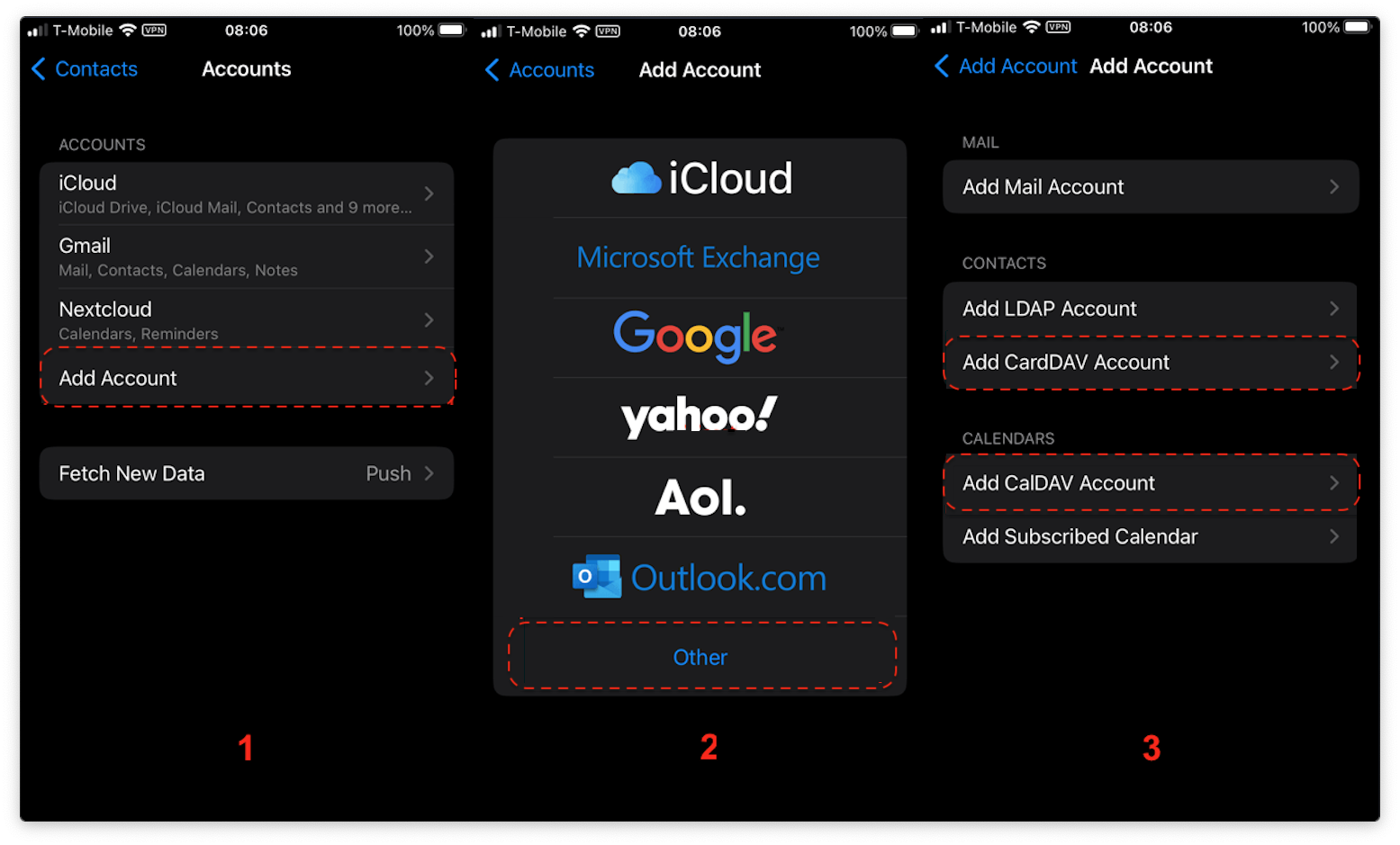
- Enter the following fields and tap "Next":
-
Server - Copy your URL from Nextcloud -> Calendar settings -> Copy iOS/macOS CalDav address. For setting up contacts/CardDav use the same path.
-
User name - The default user is "embassy" but this is your user within Nextcloud, so be sure it is the correct user if you have more than one.
-
Password - In your Nextcloud WebUI, visit the top-right-hand menu and select “Personal Settings” -> “Security.” At the bottom, under Devices & Sessions, create a new app password with a name of your choice, such as “iOSCalDAV.” Then, copy the resulting password into your iOS CalDAV account configuration.
-
Description - Anything to describe this account, such as "Nextcloud CalDAV".
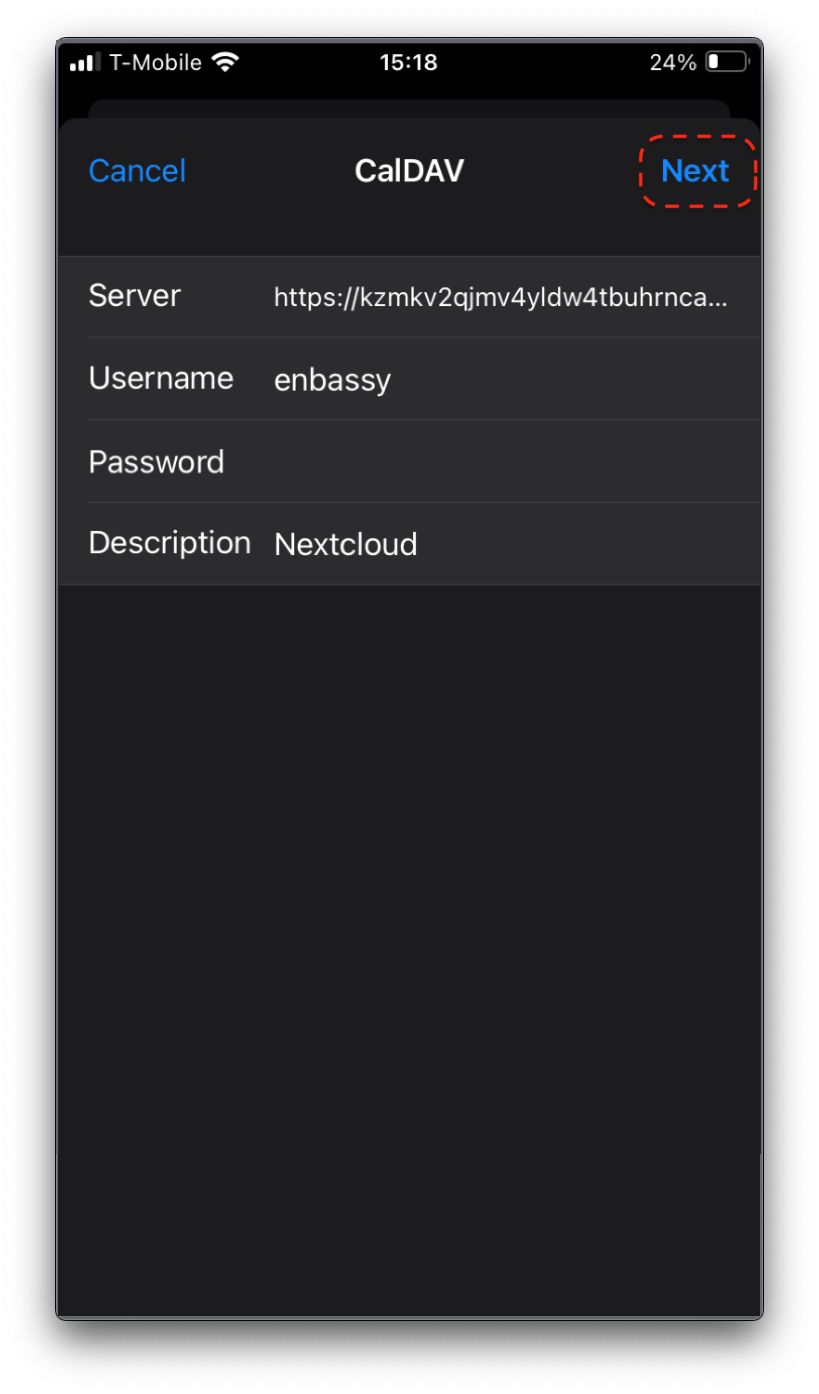
- If you get a warning about verifying the server identity, it is safe to "Continue." Add the apps you want to use, such as Calendars, Contacts, and/or Reminders, then tap "Next".
- That's it! Go back to step 2 above to set up your other account (CalDAV / CardDAV).